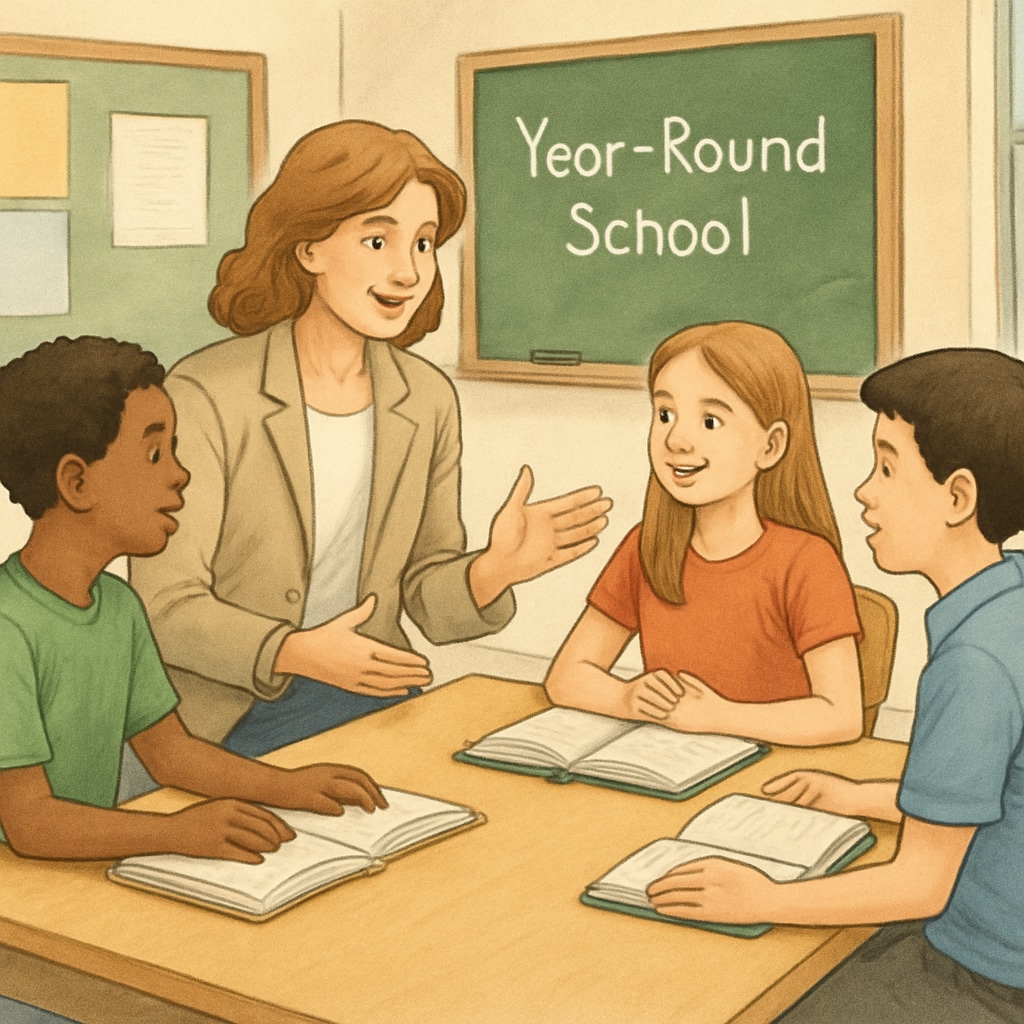Year-round schooling, as an alternative to traditional academic calendars, addresses the problem of “summer learning loss.” By replacing long summer vacations with shorter, more frequent breaks, this innovative model ensures better knowledge retention and continuous learning for students. The concept of year-round schooling has gained attention in recent years as educators and policymakers seek solutions to improve educational outcomes and reduce disparities in access to learning resources.
The Problem with Traditional Summer Breaks
Traditional school calendars, with extended summer breaks, often lead to what researchers call “summer learning loss.” This phenomenon refers to the significant decline in knowledge retention that occurs when students are away from structured learning environments for long periods. Studies have shown that students, particularly those from underprivileged backgrounds, can lose up to two months’ worth of academic progress during the summer.
For example, a report on Britannica highlights that summer learning loss disproportionately affects students lacking access to educational resources at home. Year-round school calendars aim to mitigate this issue by providing more consistent learning opportunities throughout the year.

How Year-Round Schooling Works
Year-round schooling does not necessarily mean students spend more days in school. Instead, the 180-day academic year is redistributed throughout the calendar, often using a “45-15” model. In this system, students attend school for 45 days, followed by a 15-day break. This structure eliminates the long summer break while maintaining frequent and balanced periods of rest.
Key benefits of this approach include:
- Reduced knowledge loss due to shorter breaks.
- Improved focus and motivation among students, as they anticipate regular intervals of rest.
- Flexible scheduling that allows for remediation or enrichment programs during off-weeks.
Moreover, this model can be adapted to meet the specific needs of schools and communities, making it a versatile option for educational reform.
The Science Behind Knowledge Retention
Cognitive science supports the idea that consistent and spaced learning leads to better long-term retention. The brain consolidates information more effectively when exposed to material repeatedly over time, a process known as “spaced repetition.” Year-round schooling aligns with this principle by minimizing the lengthy interruptions caused by traditional summer breaks.
According to educational psychology research, students are more likely to retain information when they engage in continuous learning cycles. This approach benefits not only academic performance but also the development of critical thinking and problem-solving skills.

Promoting Equity Through Year-Round Schooling
One of the most significant advantages of year-round schooling is its potential to reduce educational inequities. Students from low-income families often lack access to summer enrichment activities, such as camps or private tutoring, which their more affluent peers can afford. Year-round schooling levels the playing field by ensuring all students have access to structured learning opportunities throughout the year.
In addition, frequent breaks provide families with more flexibility to plan vacations or address personal needs, reducing the stress often associated with rigid academic calendars. This model promotes a more balanced lifestyle for both students and their families.
Challenges and Considerations
Despite its benefits, transitioning to a year-round school calendar requires careful planning and consideration. Challenges include potential scheduling conflicts for families with children in different school systems, as well as the need for adjustments in teacher contracts and school infrastructure.
Furthermore, some critics argue that the success of year-round schooling depends on effective implementation and community buy-in. Schools must provide adequate support and resources to ensure a smooth transition and address any concerns from stakeholders.
Conclusion: A Path Forward
Year-round schooling offers a promising solution to the long-standing issue of summer learning loss. By redistributing the academic calendar and fostering continuous learning, this model enhances knowledge retention, reduces educational inequities, and supports student well-being. While challenges remain, the potential benefits make it a compelling option for schools seeking innovative approaches to education.
As more schools experiment with year-round calendars, further research and collaboration will be essential to refine this model and maximize its impact. Ultimately, breaking away from traditional school schedules may be the key to unlocking a brighter future for students worldwide.


